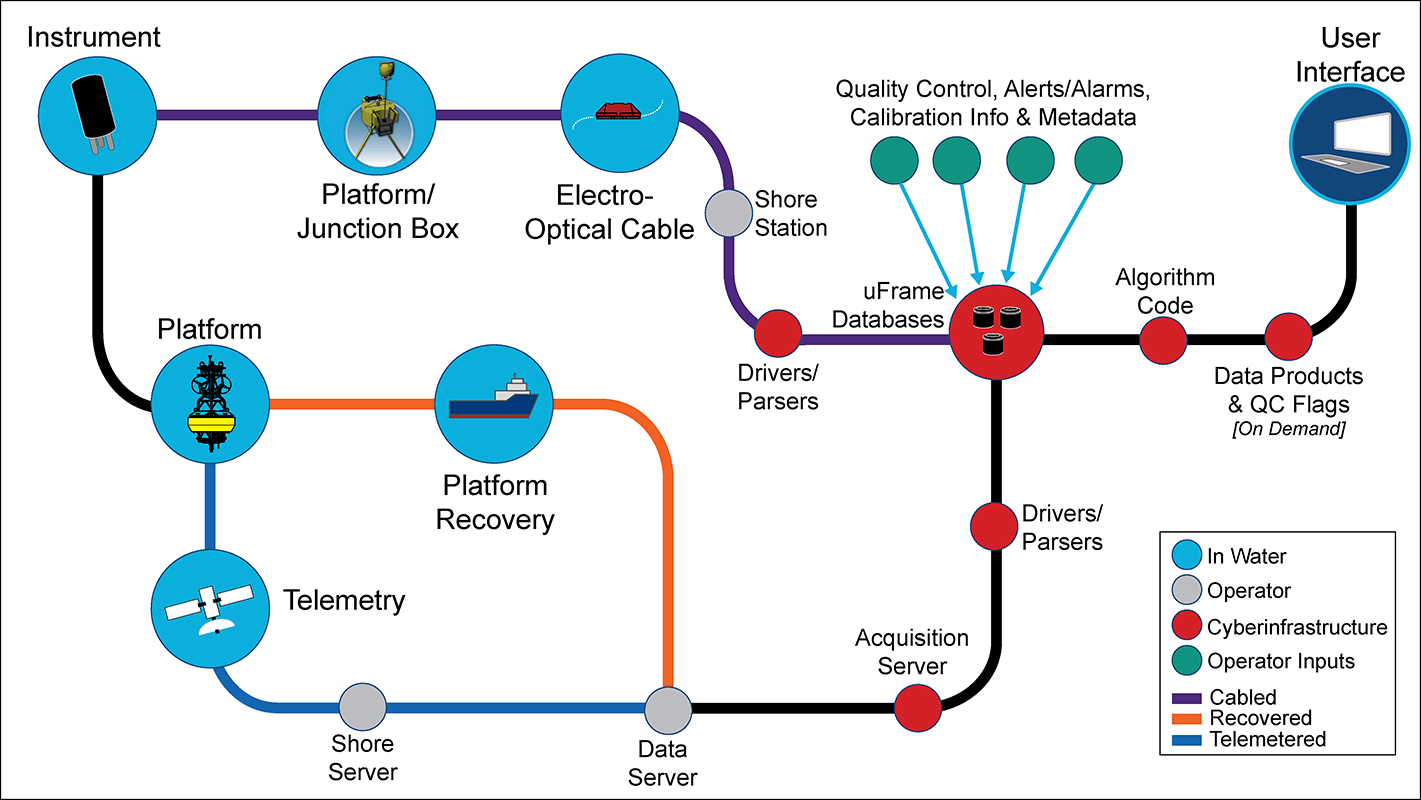Cyberinfrastructure
The data collected by OOI arrays are transmitted through a cyberinfrastructure, making it possible for anyone with an Internet connection to download ocean data in real time.
Data are gathered by both cabled and un-cabled instruments located across multiple research stations in the Pacific and Atlantic Oceans. The data are compiled mostly in tables of raw instrument values (such as counts and volts).
Raw data are continually transmitted to one of three operations centers. Regional Cabled Array data are transmitted to the Pacific City Operations Center directly through a fiber optic cable. Data from all un-cabled instruments on the Pacific coast are transmitted to Oregon State University. All un-cabled instrument data from the Atlantic coast are transmitted to the Woods Hole Oceanographic Institution. These operations centers then transfer the data to the OOI Cyberinfrastructure for processing, storage, and dissemination.
Data Management, Storage, and Processing
Oregon State University (OSU) currently manages the system of cyberinfrastructure that makes data transmission for OOI possible. Previously, Rutgers, the State University of New Jersey held responsibility for the Cyberinfrastructure systems management.
The primary computing servers, data storage and backup, are housed at OSU, which serves as the front-facing cyberinfrastructure portal access point. This entire network is then mirrored to the west coast over a high-bandwidth Internet2 network link in partnership with Pacific Northwest Gigapop. The data stores at OSU and Woods Hole Oceanographic Institution continuously synchronize with the data repositories located at the east and west coast cyberinfrastructure sites.

Data Safety and Integrity
Data safety and protection are ensured through stringent measures.
- Data security is addressed through a robust and resilient network architecture that employs redundant, highly available next-generation firewalls along with secure virtual private networks.
- Data integrity is managed through an Information Life-cycle Management architecture that integrates a redundant disk-based enterprise storage area network (SAN) and a tape-based robotic library. SAN is an enterprise-level storage network of multiple hard drives managed by an intelligent device manager, which reduces the data footprint by minimizing data duplication, while maintaining data integrity and access performance through storage redundancy. Tape storage, a “last tier” storage that is not dependent on power or cooling, supports longer-term backup and archiving, disaster recovery, and data transport.
Public Data Access
The cyberinfrastructure provides software that makes it possible for scientists, educators, and the public to pursue answers to scientific questions using OOI data.
OOI data are available for download to everyone with Internet access. Data Explorer, allows users to explore, use, and visualize OOI data in innovative and expanded ways. Beginning in 2021, data were migrated from the Data Portal, which contains data from each of OOI’s seven arrays, to Data Explorer. Data Explorer is now the primary gateway to all OOI data.
